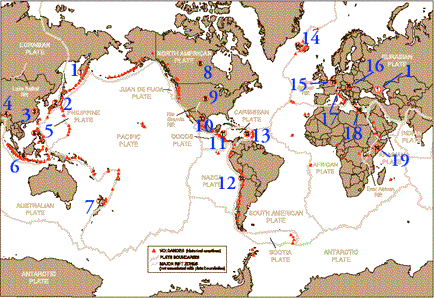|
|
||||||||||||
|
||||||||||||
|
Contributors: Research and text by Alfred Truesdell. Concept and additional text by Marilyn Nemzer (Geothermal Education Office). Base map by Ellen Lougee (U.S. Geological Survey) using plate boundaries from Charles DeMets (U.Wisc.). Locations of volcanoes with historical eruptions by Robert Tilling (USGS). Most energy production figures (MWe and GWh/yr) are from articles by G.W. Huttrer and D.H. Freeston in the 1995 World Geothermal Congress Proceedings. Further information is from U.N. Conferences on Geothermal Energy in 1970, and 1975, and GRC International Meetings in 1985 and 1990. The authors appreciate the data and good advice from Marnell Dickson (IIRG), John Lund (GHC), Patrick Muffler (USGS), Marcelo Lippmann (LBL), and numerous readers of the earlier printings. All readers are invited to keep the GEO informed of projects in their countries. |
||||||||||||
|
|
||||||||||||
| © 1997 - 2000 Geothermal Education Office | ||||||||||||

